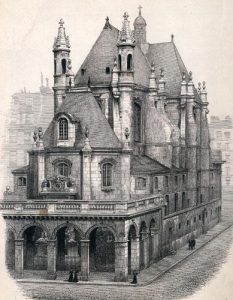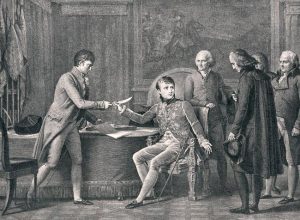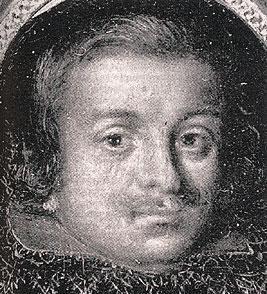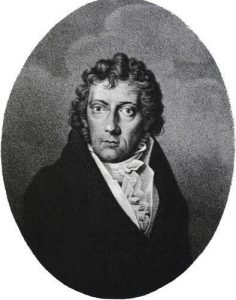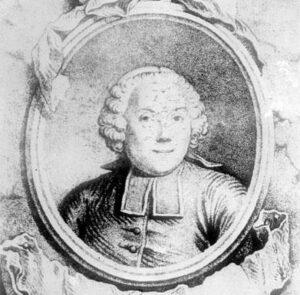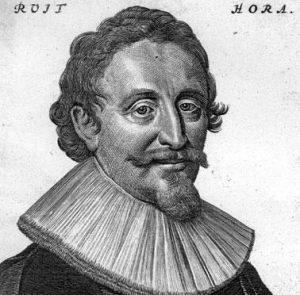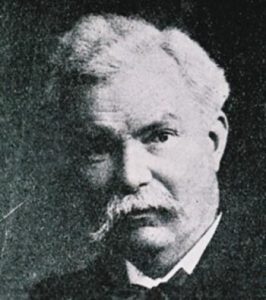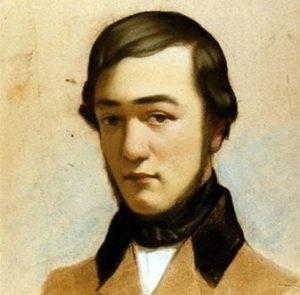The organisation of Lutheranism after 1802
French Lutheranism prevailed in the Alsace and Montbéliard regions, as former Empire Territory. The 1801 census in France numbered 197,054 Lutherans and 485,316 reformed. When the Organic Articles were implemented, some influential Calvinists, such as Robert Saint-Etienne and former pastor Jean-Bon-Saint-André , then administrator of the Mont-Tonnerre Rhine district, suggested merging Lutherans and reformed as there were « very slight differences in their services… both using the same liturgical books. » As for the church in Geneva, it deemed « essential… to put an end to the revolting schism ». But Lutherans in Alsace, in the footsteps of what was to become the general Consistory, definitely refused.
Thus French lutheranism was organised according to the law of 18 germinal of the year X, comprising the « Organic Articles concerning Protestant services « with one « general Consistory » established in Strasbourg, six survey instances and one consistorial church in Paris. The Montbéliard surveying instance was subjected to Strasbourg.
Lutheranism in the Alsace and Montbeliard regions
Alsatian Lutheranism was torn between a severe orthodox movement in Northern Alsace, and a deeply pietism-influenced movement in Central Alsace. In Strasbourg, the wealthy middle-class, generally educated and enlightened was strongly influenced by the theological faculty, marked by Kant and Schleiermacher, and was becoming more and more liberal. But the region was still strongly tied to its Church, though the people would not go to church except for special events.
There was a great discrepancy between the leading middle-class and the rest of the population, lower middle-class and craftsmen, still clinging to the old Lutheran tradition. But the contrast between the worshippers and the more and more secularised pastoral group was becoming so palpable that towards the middle of the century pastor Horning called from the pulpit at Saint-Pierre-le-Jeune for a « re-evangelisation in Alsace. » The president of one Consistory estimated that « pastors seemed to have forgotten the symbolic books on which they had sworn when they published sermons in which the name of Jesus Christ was not even mentioned ! ».
Alsatian Lutheranism, however, under the impact of the Revival movement launched a great number of diaconal organisations that still exist today ; it was true that it was perfectly consistent with what an ecclesiastical surveyor called « rationalising Christian morals. » It was the same in the Montbéliard region.
Lutheranism in Paris
The Parisian context was quite different as the number of pastors had quadrupled between 1820 and 1860, because of the arrival of Alsatian and also of German craftsmen and tradesmen. They were very religious and strongly bonded to orthodox Lutheranism. This trend was sustained by the tradition prevailing in the ancient community assembled at the chapel of the Swedish Embassy during the Ancien Régime (before 1789). This community was indeed the origin of the first lutheran parish in Paris, the Billettes, created by an imperial decree in 1808. The Swedish liturgy is still presently used in services.
The development thanks to Alsatian lutherans
The 1870 war was to have a dramatic impact on the situation. Most of the 286,000 lutherans became German after the defeat, the Francfort treaty in May 1871 and the cession of Alsace to the Reich. Nevertheless,part of the wealthy middle-class chose France as well as quite a few craftsmen, whereas a majority of country-folks stayed in Alsace-Lorraine. In 1872 there were only 45,000 lutherans left in France and 30,000 in the Montbéliard region, about 10,000 in Paris and Lyon, and 1,500 to 2,000 lutherans were scattered in France, and there were another 4,000 to 5,000 in Algiers.
Then was founded an evangelical lutheran church of France with a general synod and two surveying instances, one in Paris and one in Montbéliard, divided into six consistories one of them in Algiers.
Decline
In the early days, the Alsatian lutheran middle-class integrated into the lutheran church in Paris, but by and by they joined the reformed parishes. Some of the eminent people who still belonged to the Parisian lutheran synod were Appia, Boegner, and Goguel who was to become a pastor and a member of the reformed church at the beginning of the 20th century. In 1880 a number of lutherans belonged to the HSP (Protestant High Society), but one century later their descendants, either through marriage or for social and sometimes theological reasons, had been integrated (if they still were protestant) in the reformed circles.
After 1871 and until 1918, French Lutheranism was just a small congregation, cut off from its roots, striving to survive in the shade of the reformed movement despite the efforts of some worshippers.

